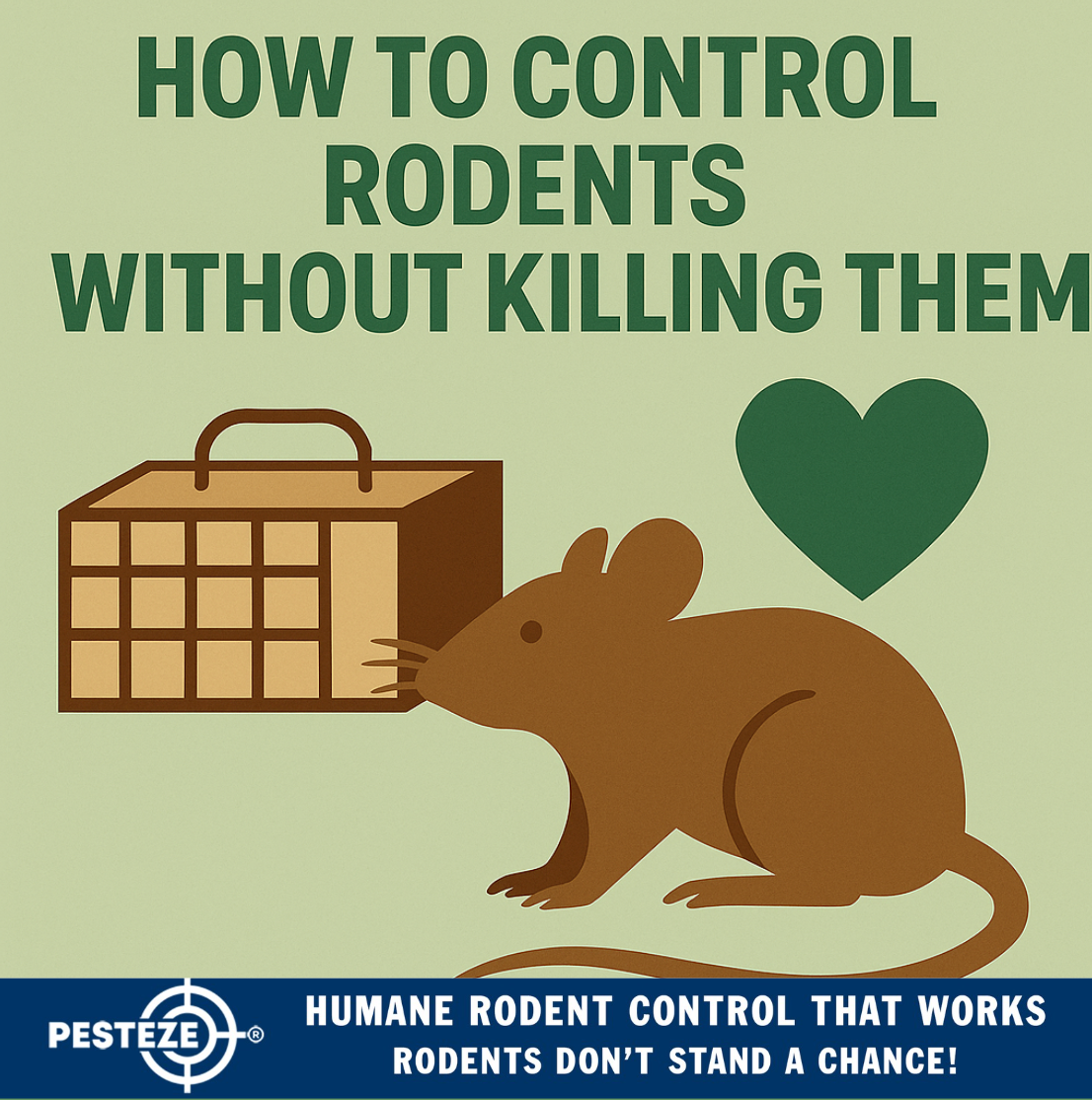HOW TO CONTROL RODENTS WITHOUT KILLING THEM

HOW TO CONTROL RODENTS WITHOUT KILLING THEM
SUMMARY
Humane rodent control focuses on managing infestations without causing harm. This guide explains effective catch-and-release and prevention strategies for rodent control without killing.
FEATURES
-
Live Traps: Safe cages that allow catch and release.
-
Ultrasonic Repellents: Devices that deter without harm.
-
Natural Deterrents: Peppermint oil, cayenne, and vinegar sprays.
-
Seal Entry Points: Stop rodents from coming inside.
-
Rodent-Proof Storage: Protect food in airtight containers.
-
Habitat Changes: Remove nesting sites and clutter.
DESCRIPTION
Many homeowners prefer rodent control solutions that avoid killing, either for ethical reasons or because they want non-toxic and pet-friendly methods. Humane strategies focus on prevention, deterrence, and safe relocation of rodents.
Live traps are one of the most effective humane tools. These cage-style traps capture rodents without harming them, allowing for relocation far from the home. Regular monitoring is essential to avoid stress or injury to the animals.
Ultrasonic repellents offer another non-lethal option. These devices emit high-frequency sounds unpleasant to rodents but inaudible to humans and most pets. While not always 100% effective, they can be useful as part of a broader prevention plan.
Natural deterrents are affordable and safe. Strong scents like peppermint oil, cayenne pepper, or vinegar sprays can discourage rodents from entering kitchens, pantries, or basements. Refreshing these deterrents regularly maintains their effectiveness.
Prevention through sealing entry points is critical. Using caulk, steel wool, or mesh to block gaps around pipes, doors, and foundations ensures rodents cannot re-enter after removal. Combined with deterrents, this reduces the need for constant trapping.
Rodent-proof storage helps protect food and reduce attractants. Storing dry goods, pet food, and grains in airtight containers eliminates easy access and encourages rodents to seek food elsewhere.
Finally, habitat changes around the home play a role. Removing clutter, wood piles, and debris reduces nesting opportunities. A tidy yard and clean storage areas make the environment less attractive overall.
By combining live traps, repellents, natural deterrents, prevention, and environmental adjustments, homeowners can successfully control rodents without killing them. These methods are not only humane but also safer for children, pets, and the environment.
- Saharsh Bansal


Comments 0